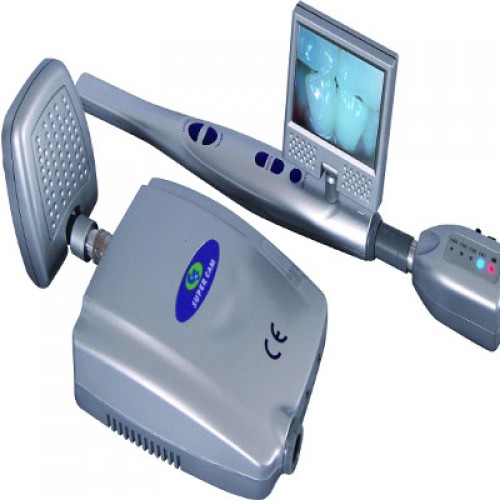Curing lights, and the science behind them, have seen amazing growth and changes in the last few years. Here’s a look at some of the amazing things that have happened and why you should be aware of them.
We’ve seen a lot of changes in the way we provide treatment since the mid-1990s or so. While there were some advances in dentistry before that time, I truly believe the pure amount of changes we have seen in the last 10-20 years in our profession may well be more than there ever were before that time.
The last decade has seen a tremendous change in curing technology with the majority of the advances occurring in the last 5 years or so.
Composite and adhesive dentistry have seen an explosion both in their use and in the science that has allowed them to become the most commonly placed restorative materials in a huge number of practices. Careful science and research from multiple sources has allowed tooth-colored materials to move from the realm of “pretty but unpredictable” into the category of “what I reach for first” for a large number of doctors.
There are several factors that can affect the longevity and overall success of bonded restorations. Among these factors are things such as: biologic contamination, oil contamination, voids on pulpal floor, incomplete bonding and over etching.
However, one of the factors that has really changed in recent years is curing lights, and I don’t think they are factored in as heavily in the success or failure of bonded restorations as they should be.
Curing lights, and the science behind them, have seen amazing growth and changes in the last few years. Let’s take a look at some of the amazing things that have happened and why you should be aware of them.
Shrinking footprints
We have seen an explosion in the amount of technology and the resulting equipment required to deliver it. If you’re lucky enough to have built a new office lately, you’ve been able to plan for this and avail yourself of more counter space. However, for many of us, that’s just not an option. This means the amount of countertop real estate is decreasing for the majority of offices.
Because of this, devices that actually take up less room than their predecessors are a bonus. Curing lights have decreased dramatically in size because of the proliferation of LED devices. This means more room to work when you need it most.
LED electronics
Most of today’s composites use camphorquinone as the photoinitiator. This chemical, often referred to as CPQ, requires a specific wavelength (color) of light to trigger it into starting polymerization of the composite resin. Because LEDs can be fine-tuned to produce just a specific wavelength or range of wavelengths, these curing devices now produce light where every photon that’s produced can be used in the curing process. This translates to better and more efficient curing. Many non-LED curing devices, such as fast halogen lights, produce lots of photons that are wasted because they are outside the range used by CPQ.
LED choices
The use of CPQ is very common by most manufacturers, but there are a few adhesive materials that use a different photoinitiator. Because of that, and the specifics of LEDs, there’s potential for a material to not be cured by a device designed to work only with CPQ. Fortunately, because LEDs can be created to produce different wavelengths, there are now several devices that can cure every resin-based material on the market. (To find out which photoinitiator your materials use, be sure to ask the manufacturer.)
Low energy
LEDs are incredibly energy efficient. This translates into the devices using less electricity than a device that uses some type of bulb with a filament. Interestingly enough, a bulb with a filament loses 90% of its energy as heat and generates only 10% as light.
Because LEDs are much more energy efficient, they don’t require nearly as much power. The result is that these devices can be powered by batteries rather than by AC current. This means a smaller footprint (see above), no cords, and being friendlier to the environment.
Easy access
I was once a fan of “gun-style” lights, probably because that’s what I grew up using. I was opposed to the “toothbrush style” lights that became popular about 10 years ago. However, you can teach this dog new tricks, and I have now come 180° in my beliefs.
I now am a big believer in the toothbrush style lights as they provide better access to difficult areas to reach…especially in the posterior.
One of the things about curing is the light needs to be as close and as parallel to the restoration as possible. If the light is even a few millimeters away, it can drastically reduce the curing efficiency, resulting in a composite that’s only partially cured. A resin that has undergone this type of curing is much more likely to cause sensitivity and have a much shorter clinical lifespan.
Because of their small size and LEDs that are frequently located right on the curing head, LED lights are superior at reaching and properly curing restorations.
bluephase® Style
With all of the features, power and efficiency of previous curing lights in the line, the bluephase® Style provides a slim, lightweight design. The ergonomic, high power cordless LED curing light is balanced to reduce the strain exerted on the hand and arm while curing. The new light probe design is said to allow for convenient access in hard-to-reach posterior areas. It also has an inductive charging system to make battery-related issues a thing of the past. The curing light is equipped with polywave™ LED technology to provide a broadband spectrum of 385-515 nm to cure all existing dental materials. The Click & Cure™ function allows for a fast convenient conversion from cordless to corded operation, in the event that the battery becomes depleted.
See more:dentist equipment for sale

